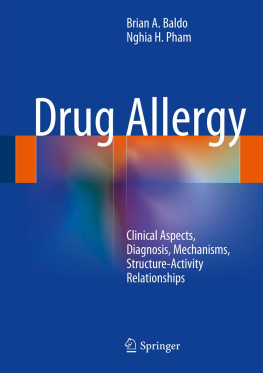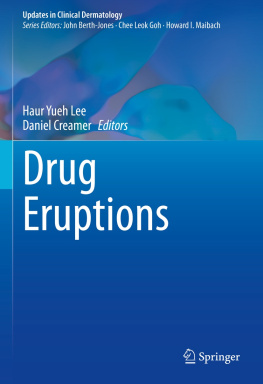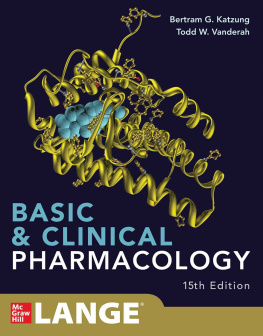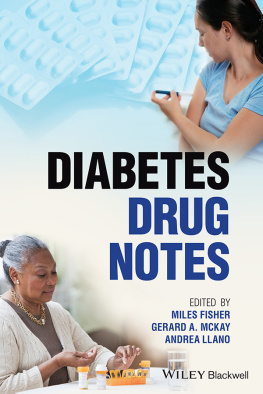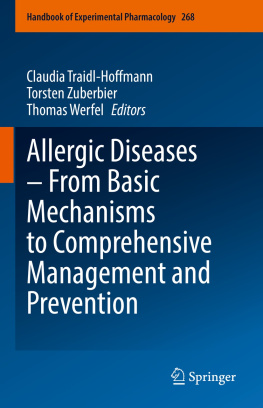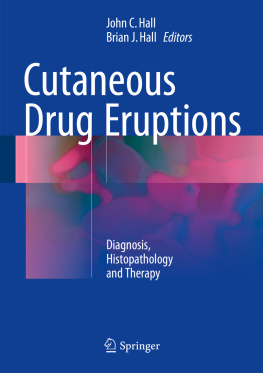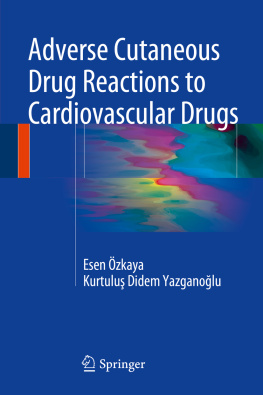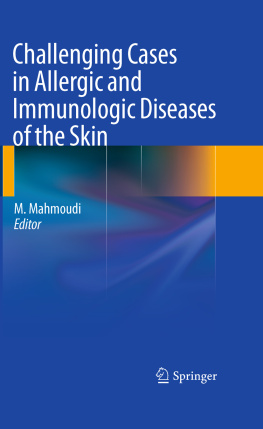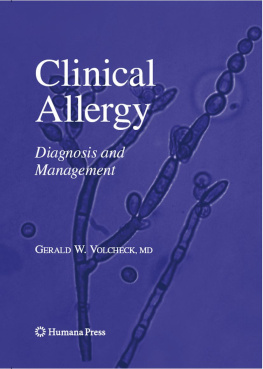Brian A. Baldo - Drug Allergy: Clinical Aspects, Diagnosis, Mechanisms, Structure-Activity Relationships
Here you can read online Brian A. Baldo - Drug Allergy: Clinical Aspects, Diagnosis, Mechanisms, Structure-Activity Relationships full text of the book (entire story) in english for free. Download pdf and epub, get meaning, cover and reviews about this ebook. year: 2013, publisher: Springer-Verlag New York Inc., genre: Home and family. Description of the work, (preface) as well as reviews are available. Best literature library LitArk.com created for fans of good reading and offers a wide selection of genres:
Romance novel
Science fiction
Adventure
Detective
Science
History
Home and family
Prose
Art
Politics
Computer
Non-fiction
Religion
Business
Children
Humor
Choose a favorite category and find really read worthwhile books. Enjoy immersion in the world of imagination, feel the emotions of the characters or learn something new for yourself, make an fascinating discovery.
- Book:Drug Allergy: Clinical Aspects, Diagnosis, Mechanisms, Structure-Activity Relationships
- Author:
- Publisher:Springer-Verlag New York Inc.
- Genre:
- Year:2013
- Rating:3 / 5
- Favourites:Add to favourites
- Your mark:
Drug Allergy: Clinical Aspects, Diagnosis, Mechanisms, Structure-Activity Relationships: summary, description and annotation
We offer to read an annotation, description, summary or preface (depends on what the author of the book "Drug Allergy: Clinical Aspects, Diagnosis, Mechanisms, Structure-Activity Relationships" wrote himself). If you haven't found the necessary information about the book — write in the comments, we will try to find it.
The variety of chemically diverse pharmacological agents administered to patients is large and continues to expand and with every new drug released, there is always potential for adverse reactions, some of them allergic. With its roots in immunology and pharmacology, the science of drug allergy is becoming better understood and applied as its importance is increasingly recognized throughout the many branches of medicine. Drug Allergy: Clinical Aspects, Diagnosis, Mechanisms, Structure-Activity Relationships sheds new light on this field. Comprehensive in design, this authoritative title identifies the most important culprit drugs implicated in immediate and delayed drug hypersensitivities and offers up-to-date information on classifications, diagnoses, underlying mechanisms and structure-activity relationships. Chapters dealing with the molecular and cellular mechanisms of drug hypersensitivities, non-immune-mediated sensitivities and diagnostic methods are presented as introductory material for in-depth treatises on the -lactam antibiotics, other antibiotics and antimicrobials, drugs used in anesthesia and surgery, opioid analgesics, corticosteroids, monoclonal antibodies and other biologics, drugs used in chemotherapy, proton pump inhibitors, iodinated and gadolinium-based contrast media and non-steroidal anti-inflammatory drugs. In addition to being of immense value to clinicians, other health care professionals and researchers, this title will prove invaluable for those taking undergraduate and graduate courses in science and will also serve as a useful text for students of medicine, pharmacy, nursing and dentistry.
Brian A. Baldo: author's other books
Who wrote Drug Allergy: Clinical Aspects, Diagnosis, Mechanisms, Structure-Activity Relationships? Find out the surname, the name of the author of the book and a list of all author's works by series.

